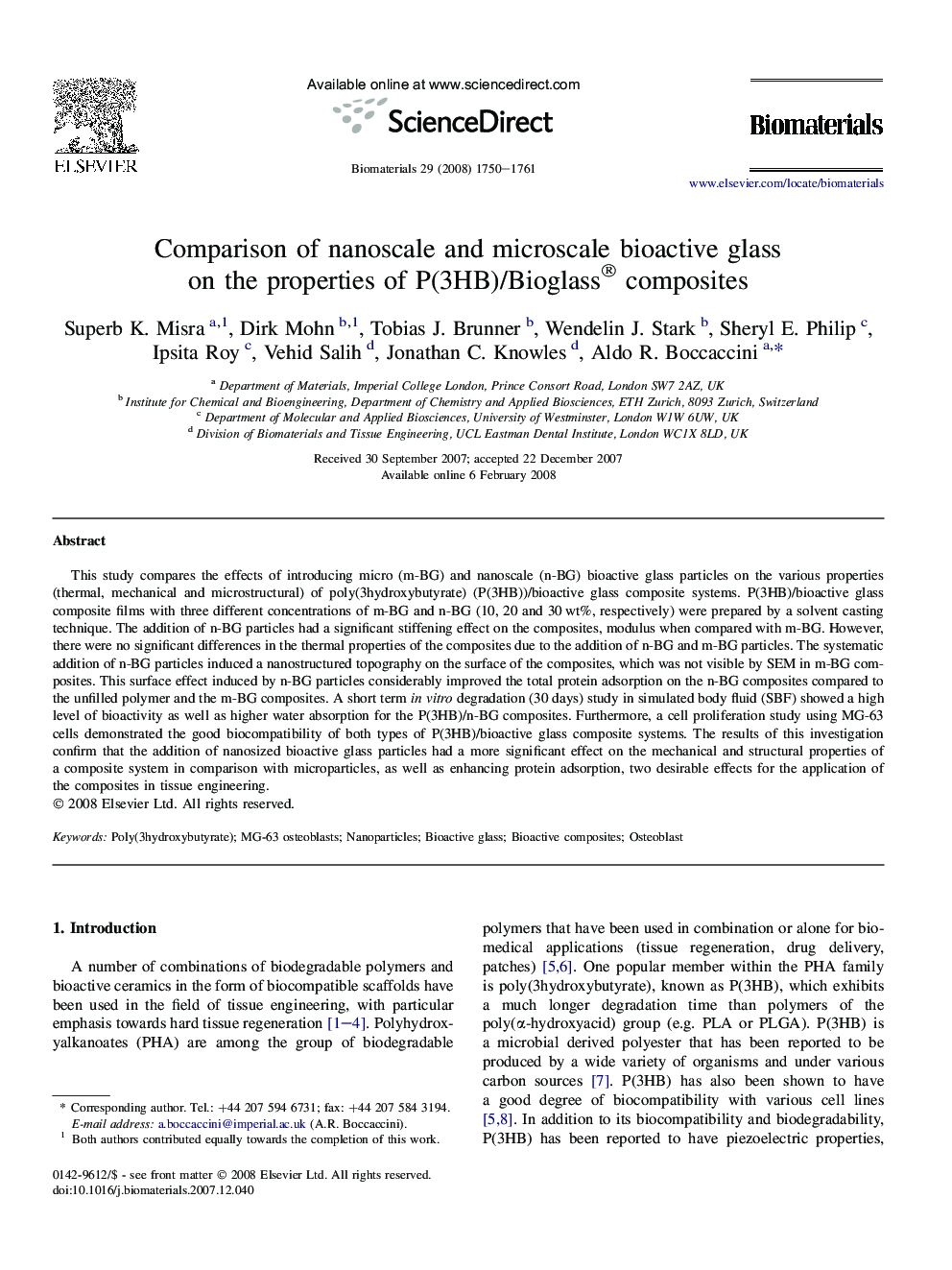| Article ID | Journal | Published Year | Pages | File Type |
|---|---|---|---|---|
| 9571 | Biomaterials | 2008 | 12 Pages |
This study compares the effects of introducing micro (m-BG) and nanoscale (n-BG) bioactive glass particles on the various properties (thermal, mechanical and microstructural) of poly(3hydroxybutyrate) (P(3HB))/bioactive glass composite systems. P(3HB)/bioactive glass composite films with three different concentrations of m-BG and n-BG (10, 20 and 30 wt%, respectively) were prepared by a solvent casting technique. The addition of n-BG particles had a significant stiffening effect on the composites, modulus when compared with m-BG. However, there were no significant differences in the thermal properties of the composites due to the addition of n-BG and m-BG particles. The systematic addition of n-BG particles induced a nanostructured topography on the surface of the composites, which was not visible by SEM in m-BG composites. This surface effect induced by n-BG particles considerably improved the total protein adsorption on the n-BG composites compared to the unfilled polymer and the m-BG composites. A short term in vitro degradation (30 days) study in simulated body fluid (SBF) showed a high level of bioactivity as well as higher water absorption for the P(3HB)/n-BG composites. Furthermore, a cell proliferation study using MG-63 cells demonstrated the good biocompatibility of both types of P(3HB)/bioactive glass composite systems. The results of this investigation confirm that the addition of nanosized bioactive glass particles had a more significant effect on the mechanical and structural properties of a composite system in comparison with microparticles, as well as enhancing protein adsorption, two desirable effects for the application of the composites in tissue engineering.
